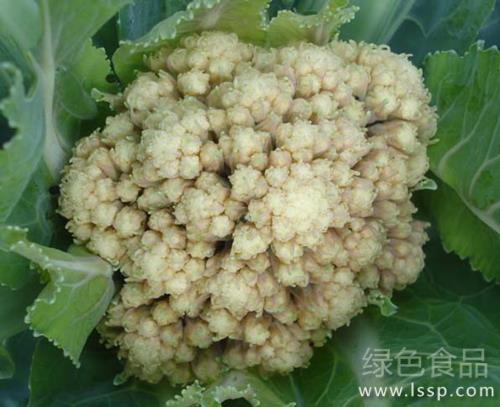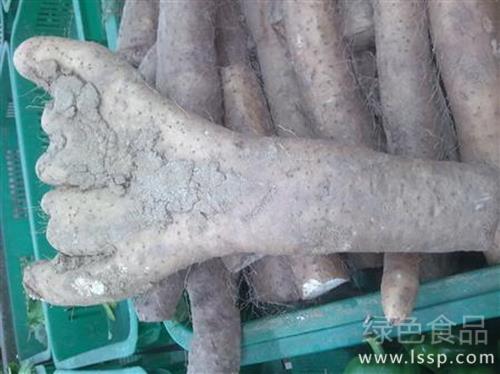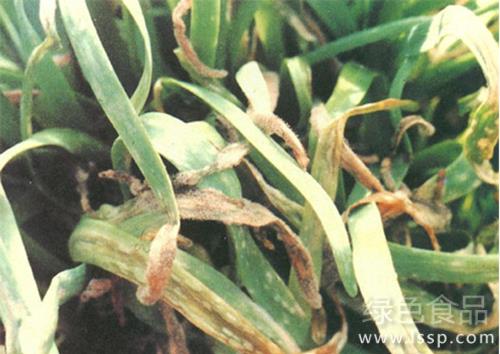Control of common diseases of cauliflower in early flowering and non-heading autumn
Cauliflower likes cold and cool, and has strict requirements on the environment and cultivation methods, especially early-maturing varieties, which are more sensitive to external conditions. The weather is abnormal in recent years, and the temperature fluctuates from high to low. Vegetable farmers are asked to pay more attention to the following problems in the process of growing cauliflower.

Cauliflower hairy flower
The main results are as follows: 1. The causes of early floret (floret) are as follows: (1) the growth of cauliflower varieties sown in spring is weak or excessive squatting seedlings, which forms florets early through malnutrition after vernalization; (2) cauliflower sows too late in autumn, especially precocious varieties, or lack of fertilizer and water, it meets the suitable temperature of the flower bulb when the leaves can never grow fully, so that the flower bulb is malnourished and forms a small floret. Preventive measures: first, spring sowing varieties should be sowed at the right time according to the characteristics of the varieties, and short-term cover should be used for planting in advance to avoid long low temperature in the seedling stage; second, early cauliflower should not squat seedlings after planting in autumn and supply fertilizer and water in a timely manner. so that cauliflower can complete vegetative growth within a certain growth period.
2. Blue and white: the green bracts or sepals protruding on the flower branches on the surface of the flower ball, called blue and white. The reason: too much nitrogen fertilizer, too much nutrition, and the continuous temperature of more than 20 ℃ during the development of the bulb, resulting in the differentiation of flower primordia into leaf primordia and the appearance of hourly slices between the cords. Preventive measures: balanced fertilization and control of cauliflower growth in rainy years.
3. Purple flower: the surface of the bouquet is purple. Reason: when the bulb is exposed or when it is about to mature, the temperature suddenly drops, the physiological function of cauliflower is destroyed, the metabolic function is disordered, and the glycoside changes to anthocyanin, which leads to the purple surface of the bulb. Preventive measures: pay attention to the weather forecast when cultivating late-maturing cauliflower varieties, spray 1% brown sugar water + 0.4% potassium dihydrogen phosphate before strong cooling weather, and harvest in time.
4. Hairy flowers: hairy objects growing on the surface of the bulb are called hairy flowers. Cause: ① did not sow in time, low temperature is needed in the period of flower head formation, such as the wrong sowing time, after cauliflower bulb formation, it is easy to form hairy flowers in case of high temperature and drought. ② field management is poor, cauliflower is prone to poor tolerance to drought and waterlogging. The harvest of ③ is too late. Preventive measures: ① selects suitable sowing time according to variety characteristics; ② strengthens field management and selects plots that can be watered and drained by drought. Poor self-performance, pick leaves in time to cover the bouquet. ③ harvested in good time.
5. Loose flowers: the flower heads are loose and uncompact due to the different elongation of the flower branches. Reasons: late harvest, mature flower heads, lack of water and fertilizer, inhibition of flower heads; excessive squatting seedlings, flower heads stop growing and aging; too high temperature, not suitable for flower head growth; diseases and insect pests, etc. Prevention and treatment measures: prescribe the right medicine to the case.
6. No flower heads: cauliflower has only long stems and leaves, but no flower heads, resulting in reduced or no yield. The reason is: ① autumn sowing is too early, the temperature is high, the seedlings can not pass the vernalization stage; ② spring sowing varieties are used for autumn sowing, because the leaves grow for a long time, so that the flower head formation period meets low temperature, resulting in no flower heads; ③ autumn sowing varieties spring seeds, because the seedlings prematurely pass through the vernalization stage, the formed florets quickly sprout and blossom, unable to form a flower ball. ④ had too much nitrogen fertilizer and did not squat seedlings, resulting in excessive growth of stems and leaves, unable to form a flower ball, or disintegration prematurely. Preventive measures: correct selection of cauliflower varieties, timely sowing, creating conditions for cauliflower to pass the vernalization stage, proper topdressing, squatting seedlings and so on.
- Prev

The grotesque shape of Chinese Yam is not easy to sell the cause and Prevention of the deformity of Chinese Yam
The grotesque shape of Chinese Yam is not easy to sell the cause and Prevention of the deformity of Chinese Yam
- Next

Control methods of Botrytis cinerea of whole leaf withered leek after growing mildew layer
Control methods of Botrytis cinerea of whole leaf withered leek after growing mildew layer
Related
- Fuxing push coffee new agricultural production and marketing class: lack of small-scale processing plants
- Jujube rice field leisure farm deep ploughing Yilan for five years to create a space for organic food and play
- Nongyu Farm-A trial of organic papaya for brave women with advanced technology
- Four points for attention in the prevention and control of diseases and insect pests of edible fungi
- How to add nutrient solution to Edible Fungi
- Is there any good way to control edible fungus mites?
- Open Inoculation Technology of Edible Fungi
- Is there any clever way to use fertilizer for edible fungus in winter?
- What agents are used to kill the pathogens of edible fungi in the mushroom shed?
- Rapid drying of Edible Fungi

